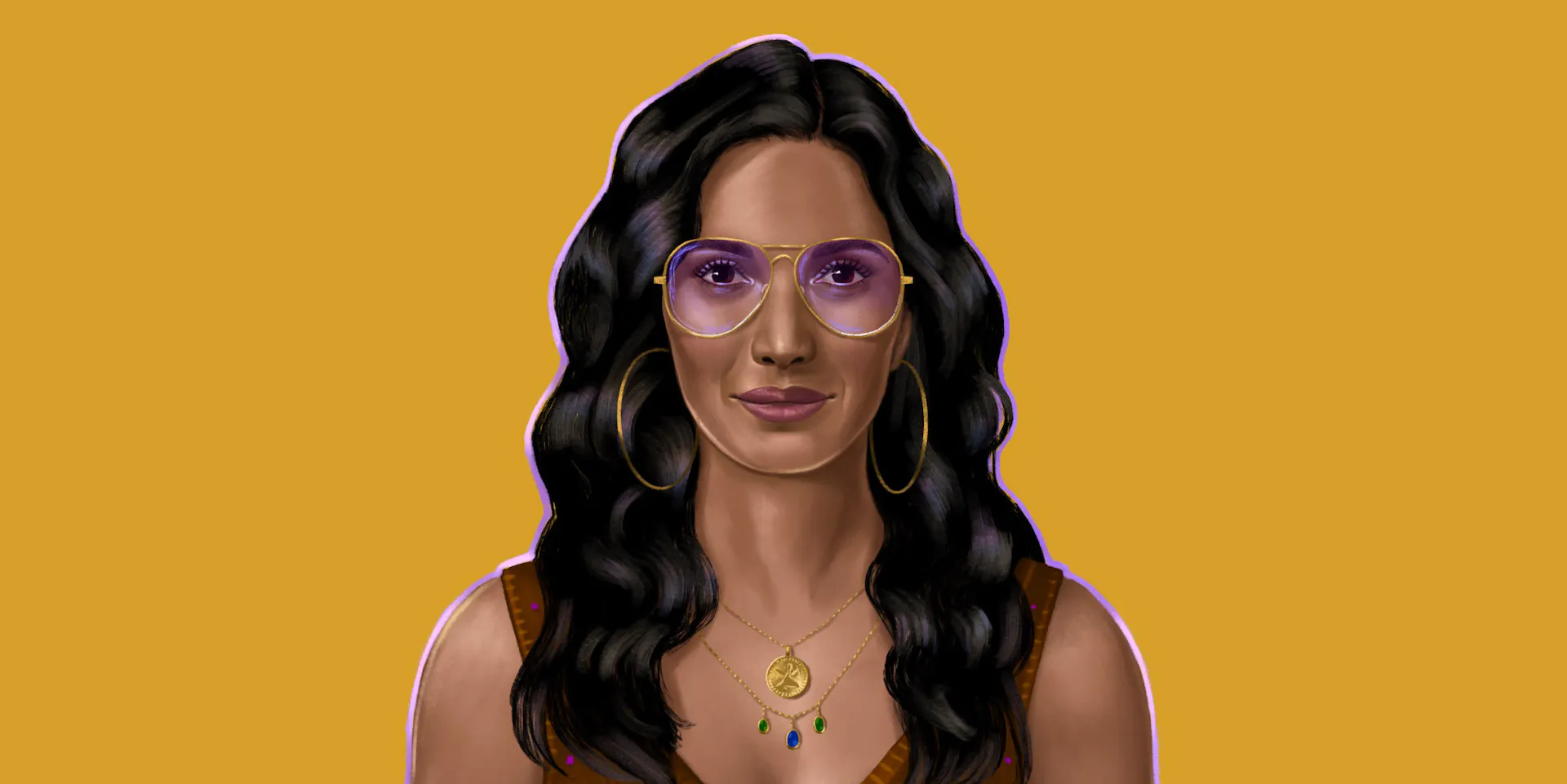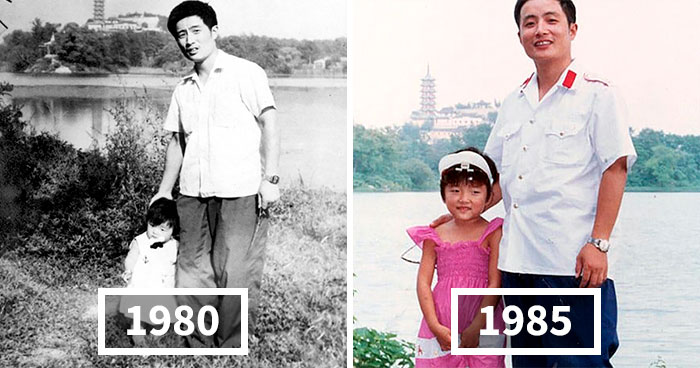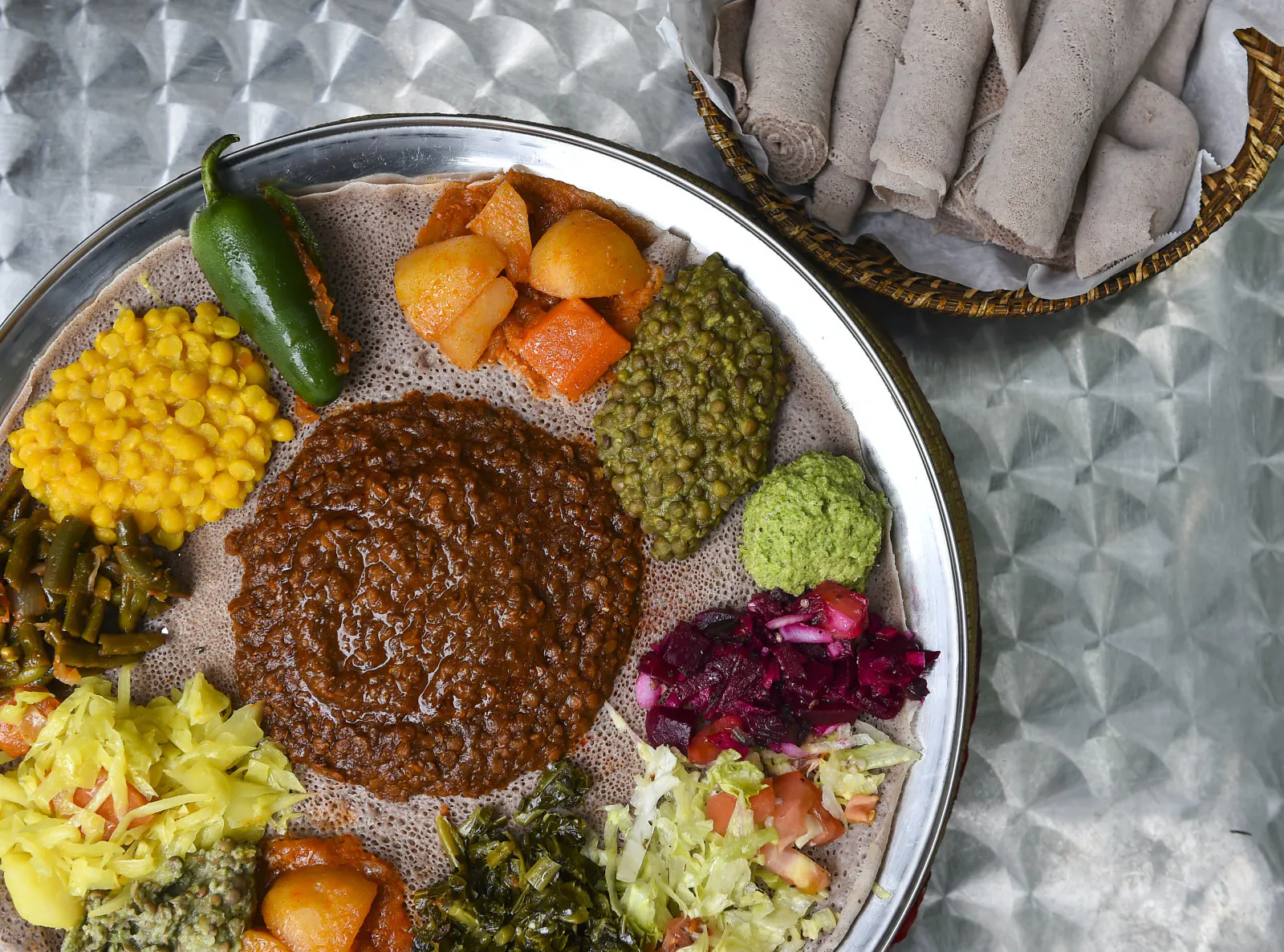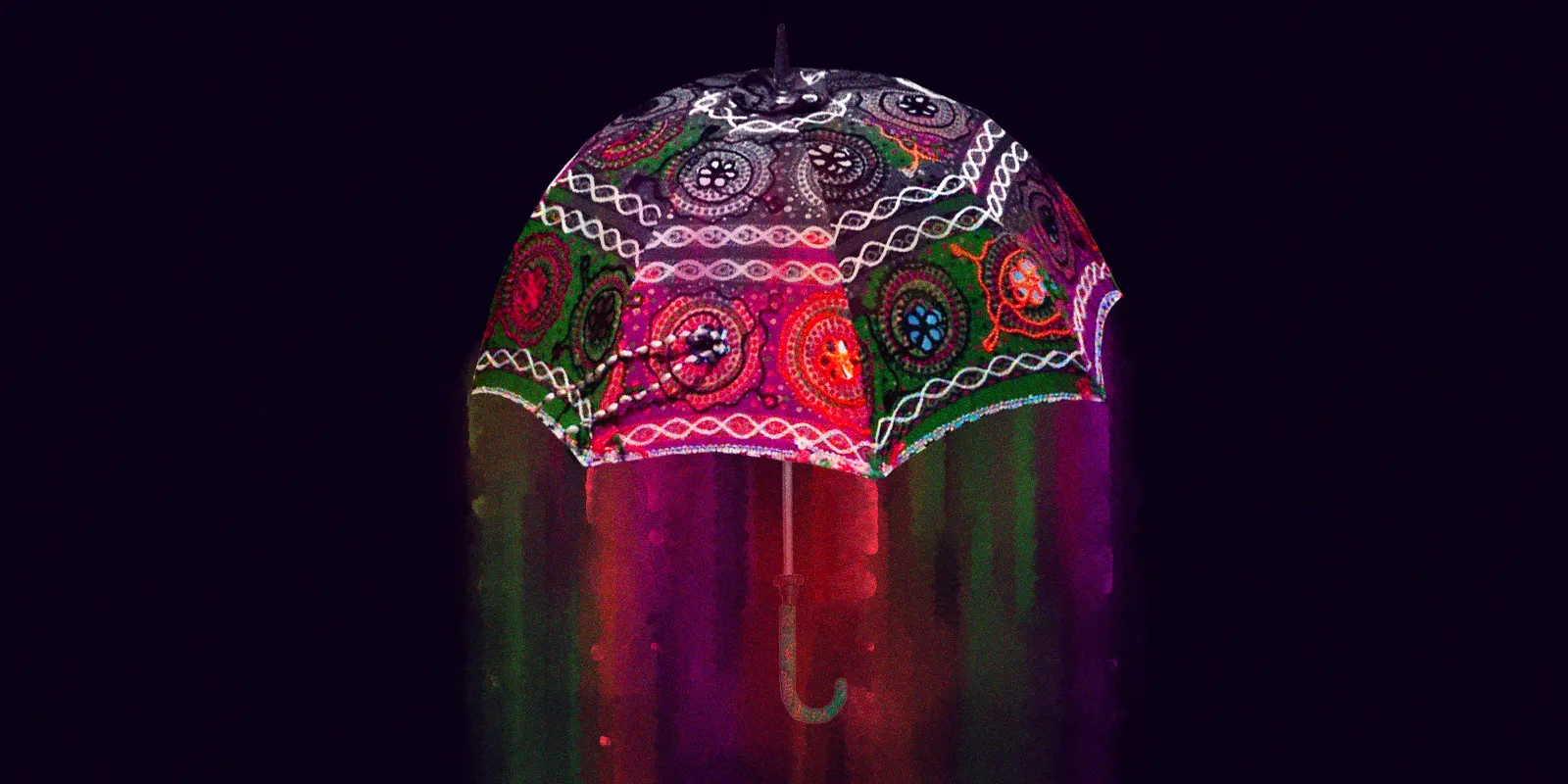Month: April 2023
The Story of Padma Lakshmi
Padma Lakshmi’s most recent production, “Taste the Nation,” is not just a new venture for the model, actress, and television host but the fulfillment of her lifelong passions as an authentic food writer, history enthusiast, and cultural steward.

Throughout her career, she has demonstrated a keen interest in these areas, making her latest show a natural progression of her passion for food, culture, and history. By showcasing the diverse cuisines and cultural traditions that have shaped America, she is using her platform to break down the longstanding stereotype of what constitutes an American identity.
During my younger years, I eagerly awaited my return home to catch my favorite shows on the Food Network. First on the list was Gale Gand, whose show “Sweet Dreams” featured delectable desserts that left me drooling. However, every week, I was most excited to watch Padma Lakshmi’s “Melting Pot: Padma’s Passport,” where she would cook up warm Indian rice pudding or flavorful saffron and preserved lemon-scented shrimp rice pilaf. It was a unique and thrilling experience to see someone who looked like me on a national stage representing my culture and cuisine. This occurred in the year 2001.
As the year 2001 drew to a close, most Americans became familiar with Afghanistan and Al Qaeda. Unfortunately, this period also saw an increase in prejudice against Brown people who did not fit their expectations. While some aspects of this social climate remain unchanged in the intervening years, there has been a notable shift in public awareness of Padma Lakshmi. As a result of her continued success, more and more people recognize and appreciate her contributions to food culture and beyond.
In the years following 2001, Padma Lakshmi accomplished a great deal. She has starred in a Bollywood film, written a memoir, hosted a travel specialist for Planet Food that took her across the globe, served as a judge on Bravo’s “Top Chef,” welcomed a child into the world, authored a thought-provoking op-ed in the New York Times, demonstrated the art of eating tacos with grace and now, added to this impressive list, she has launched a 10-episode series on Hulu titled “Taste the Nation.” This show seeks to challenge the longstanding notion of who holds power to determine what and who is considered American. By showcasing a variety of cuisines and cultures, Lakshmi aims to promote inclusivity and celebrate the diversity that defines the American identity.
Padma Lakshmi has been a familiar presence in our lives since our youth, and as we’ve grown older, it seems she has grown and evolved alongside us. America, too, has undergone significant changes during this time, as highlighted by Padma’s mother, Vijaya, in an episode of “Taste the Nation.” She observes that there are now many Indian stores and vegetables readily available, marking a shift towards a more diverse and inclusive society. Perhaps “Taste the Nation” represents the true essence of Padma Lakshmi all along, a culmination of her passions and experiences, finally manifested in a show that is uniquely hers. This program offers us an opportunity to see Padma in all her authenticity, celebrating her heritage while promoting a more inclusive vision of American culture.
Heartwarming 35-Year Photo Tradition Between Father and Daughter Will Melt Your Heart

In 1980, Hua Yunqing and his daughter Huahua began a heartwarming family tradition that lasted for over four decades. For more than forty years, Hua Yunqing and his daughter Huahua have faithfully upheld their annual family tradition of taking a photo at the exact same spot by a picturesque lake in Zhenjiang, Jiangsu, China. Without fail, the two of them have returned to that special location year after year, capturing the passage of time in a series of heartwarming photographs.

The collection of several photos is a beautiful testament to the passage of time, as it documents Huahua’s growth into adulthood, her father’s aging, and the evolving scenery around them. The tradition has been upheld without fail for over four decades, with the exception of one year, 1998, when Huahua was unable to join the family for the annual holiday photo.
Ethiopian and Indian Cuisines: A Culinary Bond Forged Through History
Sambusa and samosa. Injera and appam. Misir wot and dal. These intriguing similarities between Ethiopian and Indian cuisine have a rich and storied history, which can be traced back 2,000 years through the complex trade web between these two ancient cultures.

Across the vast expanses of the internet, South Asians increasingly express their admiration for Ethiopian cuisine, noting its striking familiarity in taste. Tourists exploring the bustling streets of Addis Ababa, Ethiopia’s vibrant capital, are often welcomed with enthusiastic chants of “namaste, namaste!” as they navigate the lively Merkato market. Ethiopian children can effortlessly differentiate between Bollywood superstars Shah Rukh Khan and Salman Khan. Furthermore, Addis Ababa proudly hosts more than two dozen Indian restaurants, including establishments like Hind Addis Bar and Partap Chicken Shop.
When it comes to Ethiopian and Indian culinary delights, even the most skilled chefs might struggle to discern the differences between specific dishes during a blind taste test. The resemblances are remarkable: sambusa is akin to samosa; injera bears a striking similarity to appam; misir wot mirrors the flavors of dal; cic with closely resembles chana dal; and kik alicha is reminiscent of matar ki dal. Niter kibbeh, a spiced clarified butter that shares many attributes with ghee, imparts a rich flavor to both cuisines. Even the grills used to prepare injera and appam share striking similarities. The list of parallels goes on.
The remarkable similarities between Ethiopian and Indian cuisines can be traced back to over 2,000 years of trade and cultural exchange that have shaped the culinary landscape of these two ancient cultures. The interconnected histories of these diverse nations have given rise to an array of delicious and unique dishes that continue to captivate the palates of food enthusiasts worldwide.
This raises a fascinating question: how did these two distinct nations, separated by over 2,600 miles, come to share their adoration for Bollywood’s most celebrated actors and their culinary traditions?
Father Discovers His Secret Kidney Donor is His Daughter
Delayne Ivanowski, a 25-year-old nurse from Kirkwood, Missouri, demonstrated incredible love and devotion to her father, John Ivanowski, by donating one of her kidneys to him. Despite John’s initial opposition to the idea, Delayne remained steadfast in her decision to help her father in any way possible. Her selfless act of donating a kidney not only showcases her extraordinary courage but also highlights the unbreakable seamless bond between parent and child. Delayne’s unwavering commitment to her father’s health and well-being is inspiring and serves as an example to us all. By undergoing the medical procedure to donate her kidney, her father has given Delayne a second chance at life, and her sacrifice will forever be alive as a testament to the power of love and familial devotion.

John was diagnosed with IgA nephropathy and was required to undergo four to five hours of dialysis four days a week, which had a significant impact on his quality of life. Delayne, who lived with her parents, went through a lengthy process of getting approval to become her father’s kidney donor without his knowledge. This process included multiple blood tests, medical evaluations, and various other tests, all of which Delayne endured in secret. Despite the challenges, she faced in keeping her plans a secret, Delayne’s unwavering commitment to helping her father motivated her to go through this arduous process. Her selfless actions have not only given John a new lease on life but have also demonstrated the power of family love and devotion. Delayne’s dedication to her father’s well-being is an inspiration to us all, and her story serves as a reminder that true acts of kindness and selflessness can make a profound impact on the lives of those around us.
Why the West’s Fear of Color is a Deep-Seated Issue: Exploring the Roots of Cultural Prejudice
Unpacking the Complex and Provocative History Behind the Western Preference for Neutrals and Monochrome: A Fascinating Exploration of Cultural Aesthetics and Societal Prejudices.

For years, I have heard non-South Asians express admiration for the vibrancy of our cultural and religious celebrations, from weddings to festivals, with comments like, “Oh, I just love your celebrations. They’re so colorful!” However, despite the positive sentiment, these comments often carry an undercurrent of discomfort or exoticization, leaving me with an unsettling feeling that the term “colorful” is used as a euphemism for “exotic.”
According to Kriti Mehta, a 26-year-old owner of a South Asian boutique in New Zealand, such comments are commonplace and have become a cultural trope, almost like a meme. In contrast, Mehta pointed out that a simple Google search for “classy aesthetic” predominantly yields results featuring neutral colors, especially in recent years. This discrepancy raises questions about the underlying biases that influence Western perceptions of beauty and aesthetics and the ways in which they have impacted and marginalized cultures and traditions that embrace color and vibrancy.
The recent surge in the popularity of neutrals, characterized by white walls, plain shelving, and grey furniture, has ignited a passionate discussion on TikTok. The conversation was sparked by an article claiming that “color hasn’t been appearing from the world,” supported by data showing that everyday objects have become less colorful and greyer. Surprisingly, even drivers have begun to prefer white or black cars, and carpets have lost their colorful patterns, with beige being the most popular tone, followed by grey and brown. In South Asian fashion, Kriti Mehta has observed that pastel pink, beige, or white are increasingly preferred colors for suits and lehengas. One TikTok user, @eggmcmuffinofficial, linked this “beige era” to a desire for minimalism and mass consumption, resulting in an aesthetic that is easy to reproduce and mass-produce.
However, some users, such as Kriti Mehta, have argued that the appeal of neutrals runs deeper than mere convenience and cost-effectiveness. In fact, according to some experts, the West has a long-standing history of resisting and even fearing the use of vibrant colors. This phenomenon has been attributed to a range of cultural factors, including the association of bright colors with “uncivilized” or “primitive” cultures, the perceived vulgarity of ostentatious displays of wealth, and the stigmatization of “feminine” attributes associated with colorful clothing and ornamentation. As such, the preference for neutrals may be rooted in deep-seated societal biases that prioritize restraint, conformity, and muted elegance over individuality and cultural diversity.
“Choli Ke Peeche” – Exploring the Scandal and Influence of a Bollywood Classic
As we journey through the annals of Bollywood history, few songs have captured the essence of an era and provoked as much debate as the iconic “Choli Ke Peeche Kya Hai” from the film “Khalnayak.” In this retrospective, let’s unravel the intricate tapestry of scandal and influence that continues to surround one of the Indian film industry’s most evocative songs.

It was 1993, a time when Indian cinema was experiencing significant transformations. Among the films that left an indelible mark on the industry and the audience was “Khalnayak,” starring Madhuri Dixit and Sanjay Dutt. With its unique storyline and captivating soundtrack, Khalnayak became the second-highest-grossing film of that year, selling a staggering 10 million cassettes.
Nearly three decades later, the memory of the film’s plot may have faded, but one element continues to enthrall generations – the iconic song “Choli Ke Peeche Kya Hai.” A mesmerizing blend of powerful performances and a catchy tune, this track captured the imagination of millions across India and beyond.
The song’s popularity, however, was not without controversy. Deemed “vulgar” by some, it faced backlash and was banned by All India Radio and Doordarshan, the national television channel. Yet, despite the official restrictions, the song’s appeal grew more assertive as people from all walks of life embraced its unabashed honesty.
In the years since, “Choli Ke Peeche Kya Hai” has endured as a symbol of the changing face of Indian cinema, defying the constraints of conventional norms and pushing the boundaries of artistic expression. As one of the most memorable moments in the film, the song has stood the test of time, even amidst an ever-evolving landscape of electronic party anthems and glamorous dance numbers.
Today, YouTube comments offer a testament to the song’s lasting impact. Individuals worldwide share their experiences of being punished or even suspended from school for singing controversial lyrics. Yet, these stories also underscore a sense of nostalgia and camaraderie among fans who, decades later, continue to find joy in this iconic and provocative track.
In the end, “Choli Ke Peeche Kya Hai” is a powerful reminder of the transformative power of cinema and the resilience of art in the face of censorship and social pressures. This unforgettable song will continue to inspire and entertain new generations of film enthusiasts as the years go by.
Sadio Mane Transforms His Hometown Into a City, Uplifting Senegal’s Communities
Sadio Mane, the talented and renowned footballer, has emerged as an inspirational figure due to his exceptional skills, philanthropic efforts, and unwavering commitment to uplifting his community. Hailing from the humble village of Bambali in Senegal, Mane’s success story transcends his sporting achievements, reflecting his deep-rooted desire to make a difference in the lives of those in need.

Mane’s ongoing efforts to transform his childhood village are truly commendable. He has undertaken various development projects to improve the infrastructure and provide essential amenities to the local community. A new hospital is under construction, significantly enhancing healthcare accessibility and quality for the village’s residents. This facility will address the community’s critical health challenges, ensuring they have access to timely medical care.

In addition to the hospital, Mane is investing in the education sector by building a secondary school in Bambali. This initiative aims to empower the local youth by providing them with opportunities to learn and grow, eventually breaking the cycle of poverty and promoting social mobility. Education is a powerful tool for change, and Mane’s contributions will undoubtedly leave a lasting impact on the lives of countless young individuals.

Understanding the importance of basic infrastructure in promoting sustainable development, Mane is also funding the construction of a fuel station and a post office. These facilities will create employment opportunities and stimulate economic growth in the village. By addressing the community’s essential needs, Mane is laying the groundwork for a brighter and more prosperous future for Bambali.

Furthermore, Mane’s benevolence extends beyond his village, as he reportedly provides monthly support to people residing in impoverished regions of Senegal. His empathetic and generous nature is evident in his preference to use his wealth to help others rather than indulging in ostentatious displays of luxury. This sets him apart as a role model, demonstrating that true success lies in the impact one can make in the lives of others.

In conclusion, Sadio Mane’s commitment to transforming his community and uplifting the lives of those less fortunate is truly inspiring. Through his various development projects in Bambali and his ongoing support to impoverished regions in Senegal, he has made a significant difference in the lives of many. As a sports icon and philanthropist, Mane exemplifies the true essence of success, proving that real greatness is measured not by wealth or fame but by one’s contributions to society.
How the West Simplified ‘The Kama Sutra’ to Mere Sexual Acts

For centuries, the mysterious Indian manuscript has been an unparalleled guide to the art of love and life’s intricacies. An exquisite tapestry of wisdom, its pages unveil a deep understanding of the human experience. It offers profound insights into passion, relationships, and self-discovery. This timeless treasure has shaped countless lives, transcending the boundaries of culture and time to become an enduring beacon of enlightenment and inspiration.
In an unforgettable episode of The Big Bang Theory, the ever-charming Raj (Kunal Nayyar) attempts to captivate the heart of Sheldon’s stunning sister, Missy. In his inimitable style, he queries whether she acquainted with The Kama Sutra. With a hint of surprise, she replies, “The sex book?” To this, Raj confidently retorts, “The Indian sex book. In other words, if you ever wondered who wrote the Book of Love. It was us.” Cue the collective groan.
Undoubtedly, this is far from the first time The Kama Sutra has been wielded as a risqué punchline. Crafted in the formal Sanskrit language around the third century, Kama Sutra stands as one of the most renowned. It widely disseminated ancient Indian manuscripts across the globe. Regrettably, its essence has been somewhat distorted over time, primarily due to the influence of the British. They have reduced it to a mere compendium of sexual knowledge with a particular focus on sexual positions. However, The Kama Sutra extends far beyond the confines of eroticism—it encompasses love, romance, and the delicate art of living.
In its most accurate form, the Kama Sutra is a comprehensive guide to cultivating meaningful connections, fostering passion, and nurturing love, transcending the superficial boundaries of physical intimacy. Through its profound wisdom, the ancient text illuminates the diverse facets of human relationships. It provides invaluable insights into the complexities of our emotional landscape. The Kama Sutra’s rich tapestry of knowledge invites us to delve deeper. It explores the delicate dance of love and life as we seek to harmonize our desires and aspirations with the rhythms of the world around us.
Unbelievable Clothing Coincidences That Will Leave You Speechless

Prepare to be utterly amazed as you embark on a journey of mind-boggling coincidences that will leave you pondering the question, “What are the chances?” You are about to witness a collection of photographs capturing moments that are so unbelievably rare that it’s hard to fathom their existence.
As you scroll through the images, you can’t help but marvel at the sheer luck that allowed someone to be present with a camera at the exact moment when these coincidences occurred. Each picture captures a fleeting moment in time that is captivating and unbelievable.
The reactions to these coincidences are as diverse as the people captured in them. While some may have felt embarrassed or mortified, others saw the humorous side and took it all in good stride. But one thing is for sure, the odds of these coincidences happening are so slim that it’s more likely for lightning to strike in the same spot twice than for these clothing coincidences to be authentic.
These images testify that life can be full of surprises, and it’s impossible to predict what fate has in store for us. Sometimes the universe has a funny way of reminding us that we are not always in control and that there’s always an element of chance at play.
So sit back, relax, and prepare to be awed as you witness the most improbable clothing coincidences that will leave you wondering about the mysteries of the universe.
The Hidden Depths of Love and Loyalty in Our Furry Friends

Dogs have long been hailed as humankind’s most faithful companions, with their unwavering loyalty and boundless love for their human families. This fascinating article delves into the lesser-known qualities and facts about these incredible animals that make them exceptional friends. Any dog enthusiast will attest to the sheer joy of returning home to an eager, wagging tail and the heartwarming welcome of their beloved pet.
These remarkable creatures offer companionship and emotional support and display a deep understanding of their human counterparts, often knowing how to lift our spirits on the most challenging days. Confiding in your canine confidant, you can share your innermost thoughts without fear of judgment or betrayal.
Despite our occasional inability to fully comprehend their attempts at communication, these four-legged friends continuously strive to bridge the gap, offering solace and comfort when we need it most. Suppose you have yet to experience the unbridled joy of canine companionship. In that case, this article will surely inspire you to welcome a furry friend into your life and uncover the boundless love and loyalty they have to offer.
